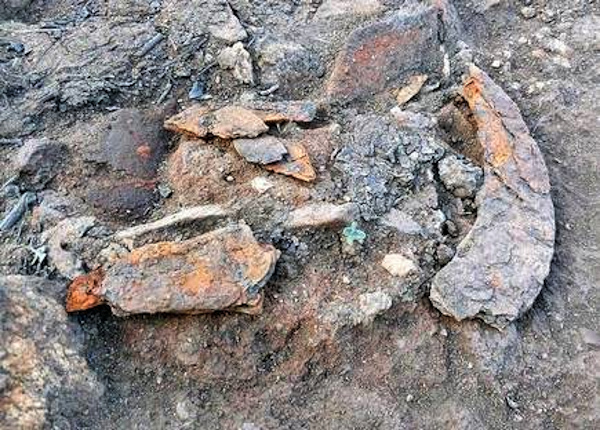An iron sickle presumed to be from the Iron Age was discovered from the Malampuzha reservoir near here recently.
The broken sickle was found on top of a destroyed urn in the valleys that had long been converted into the reservoir of the Malampuzha Dam. The discovery made by a team of researchers led by K. Rajan, associate professor of history at Government Victoria College here, has the potential to throw light on the agrarian nature of life led by the people in the locality during the Iron Age.
Mr. Rajan and team have been exploring the reservoir and the catchment areas of Malampuzha for the last two years. Several iron tools were recovered during the explorations in recent months from the catchment areas.
Iron implements such as a nail, a chisel, a wedge, a knife and a dagger had been recovered during explorations in July last year. They were found from a cist burial site.
Burial units
Malampuzha region has many varieties of Iron Age burials, including cairn circles, stone circles, cist burials, dolmens, urn burials, and menhirs.
Mr. Rajan resumed the exploration a few weeks ago when the waters in the Malampuzha reservoir receded. The broken urn and the iron sickle were found during an intensive search for the Iron Age traces.
“The sickle can be considered as a piece of solid evidence to prove that the Iron Age people who lived in Malampuzha and neighbouring locality had led an agrarian life,” said Mr. Rajan.
Historians and archaeologists across the world have associated sickle as a symbol of agriculture. “It’s mainly used for agricultural purpose. Interestingly, iron technology, pot making, agriculture and a developed burial culture were the most important characteristics of the Iron Age in Kerala,” said Mr. Rajan.
Archaeological explorations have thrown up pieces of evidence to prove that that the low-lying areas around mountains and hills in Kerala had been widely cultivated by the people of Iron Age. But historians are yet to come up with any evidence to throw light on the irrigation system that existed during the Iron Age.
“We do not have any idea about the irrigation system that the people Iron Age had used. It is certain that people might have begun cultivating the naturally irrigated fertile lands in the fringes of the hills and mountains,” said Mr. Rajan.
Iron Age in Kerala is said to have started in the pre-Christian era and ended by the first third centuries after Christ. An exploration conducted by M.G. Sasibhooshan in 1980s had found burial sites within the catchment areas of Malampuzha.
The Archaeological Survey of India (ASI) has asked the Victoria College researchers to survey the region thoroughly and to document it in detail.
Source: The Hindu
Image Courtesy: The Hindu
You may also like
-
India Can’t Afford to Remain Stagnant at this Juncture, Says PM Modi; Asks People to Buy Locally-Made Goods
-
Stolen Artefacts to be Returned to India from Scotland Museums
-
Netaji’s Hologram Statue at India Gate
-
10th Century Stone Idol of Goat Head Yogini IllegallyRemoved from A Temple in Lokhari, Banda, UP Being Returned to India
-
UNESCO Inscribes ‘Durga Puja in Kolkata’ on the Representative List of Intangible Cultural Heritage of Humanity
